‘Wellness and relaxation’, ‘spa’, ‘luxury retreat’ – these phrases have all become commonplace descriptions for residential bathrooms. From the bathroom suite right down to the detail of the light switch or radiator valve, today’s consumer wants – and comes to expect – a ‘positive’ experience from every aspect of their space. And with MTW Research predicting that the UK Bathroom market will grow by £40 million in 2019, the consumer is clearly willing to invest in this all-round ‘positive’ experience.
The rise in ‘designer’ radiators and heated towel rails is a testament to this new demand. At AEON, our customers expect to be able to choose from a range of styles, shapes and finishes. The question though, is how much consideration of material and manufacturing quality the consumer derives from an increasingly digital retail experience. The decision to purchase balances most often between price and aesthetic. However, once installed, it is performance that will become the focus. As an installer, this is your opportunity to communicate the benefits of a superior material such as high-grade stainless steel – in providing both an initial triumph, but also a long-lasting, ‘positive’ consumer experience.
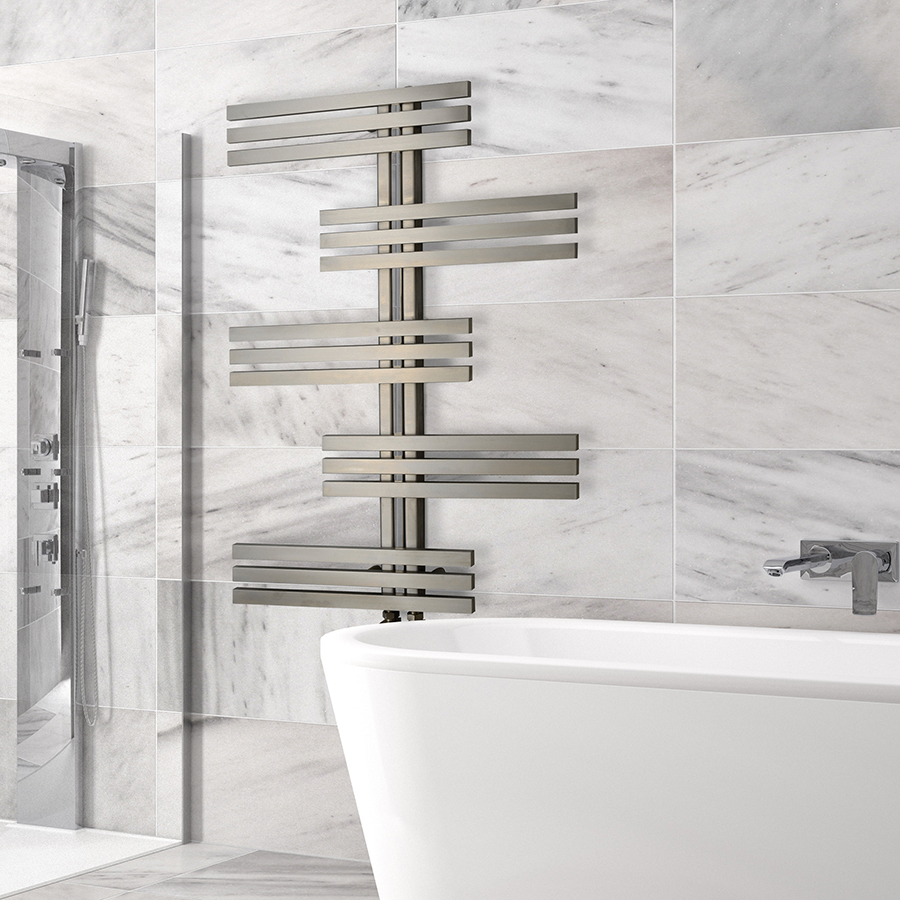
MODEL SHOWN: LNX107-S (Brushed Matt) 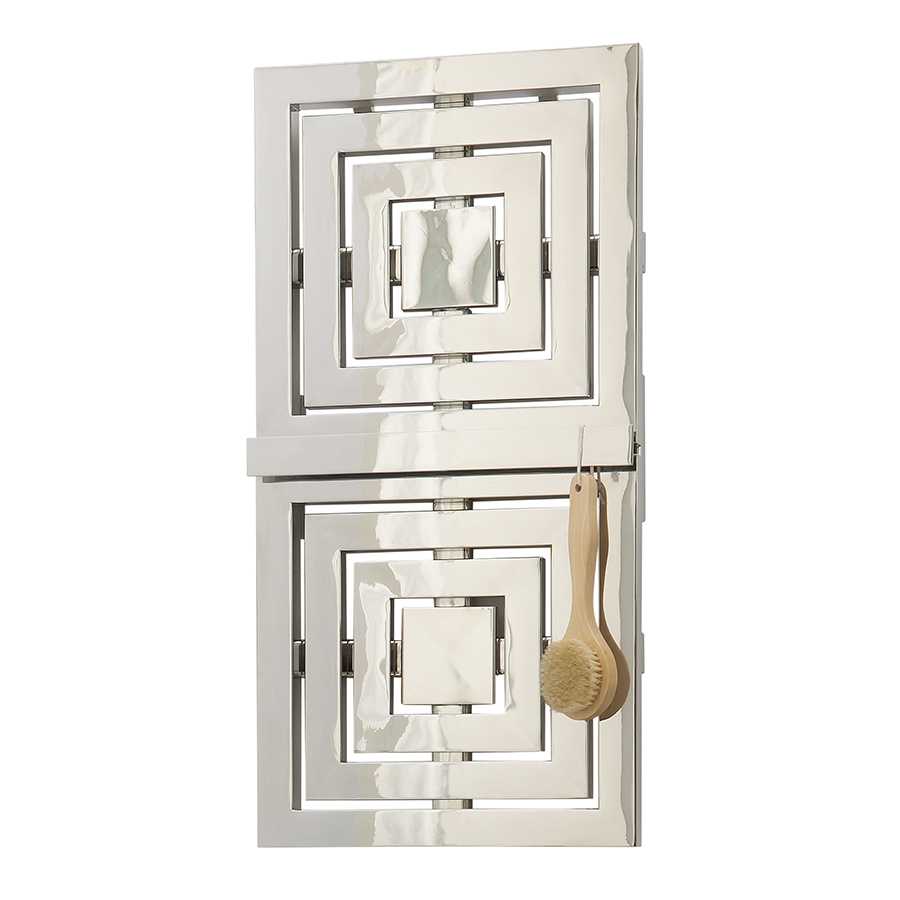
MODEL SHOWN: COF490-P (Polished) 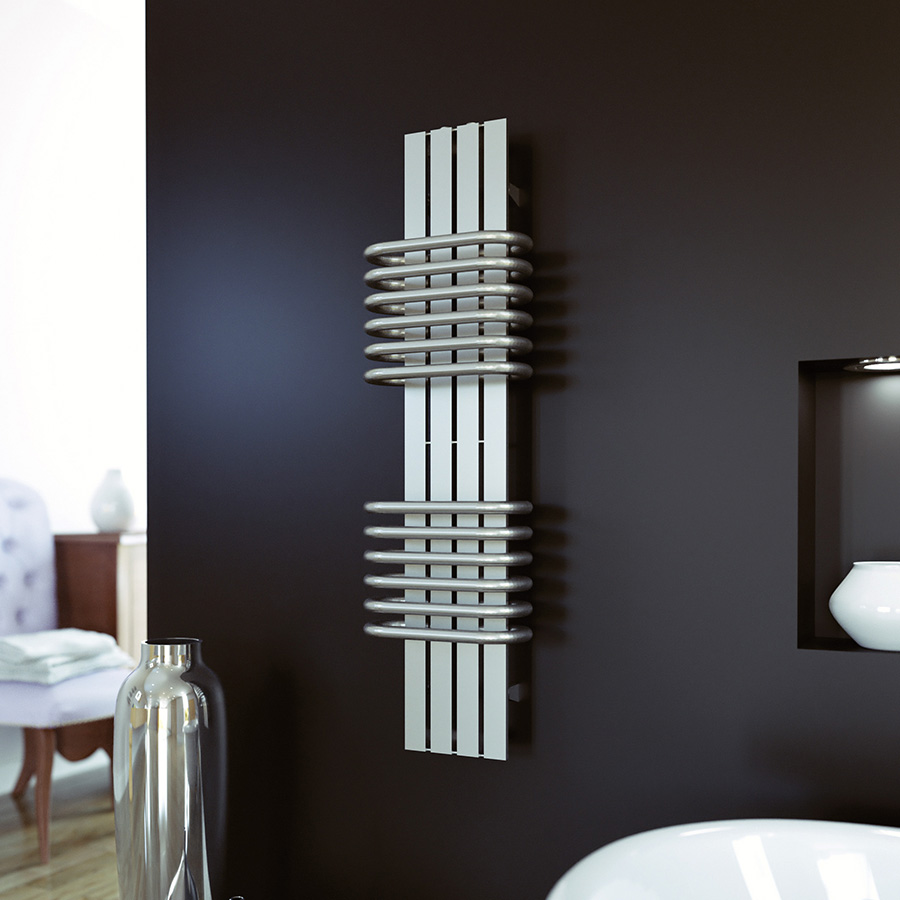
MODEL SHOWN: BOL2-S (Brushed Matt)
Fulfilling the current popular demand for silver tones, 304 grade stainless steel has a high nickel content, ideal for use in creating the AEON Collection’s exceptional, sculptural shapes in beautiful brushed matt or highly polished finishes. Moreover, the TIG welding process creates an almost invisible weld, which is as strong as the body of the towel rail itself. This makes stainless steel the best choice for creating designs that are both stunning and efficient.
Square or rectangular radiator designs always give better output compared to round tube cross-sections, due to their greater surface area. Tube-in-tube designs also increase the efficiency; building round section tubes inside larger square section outer tubes increases the wet surface area by about 40%, increasing the output by almost that much as well. Or, the same output with a radiator 40% smaller in size – ideal for a small space that needs a high output.
In like-for-like designs, 304 grade stainless steel also outperforms chrome-plated steel on heat output; in testing, AEON has noted that a chrome finish reduces heat output results by approximately 20% compared to other finishes. (Stainless steel is not heat conductive in the same way as chrome plating, due to nickel and chrome content in the material itself, but AEON outputs are tested and published with this in mind.) Consumers can also feel satisfied they are making an informed ecological choice; the chrome plating process itself is banned in many cities across Europe, due to the severe environmental impact not just on carbon foot print, but on soil pollution and the health risk to employees, unless the factories install very expensive waste processing systems.

MODEL SHOWN: GRA146-S (Brushed Matt) 
MODEL SHOWN: POD412-S (Brushed Matt) 
MODEL SHOWN: TUB508-P (Polished)
Of course, this superiority of an AEON stainless steel radiator or heated rail comes at a higher price point. The market is awash with inexpensive towel rails, tempting your customer to trim the budget. But you can easily predict the disappointment, when, just 18 months after installation, a cheap towel rail starts to flake or discolour, marring the overall look of a carefully planned bathroom. The deterioration usually begins near the valves, a vulnerable spot where paint or chrome plating is thin and water can penetrate beneath it. Unfortunately, this is almost a given with highly ferrous materials, and replacing these items without causing damage to other fittings – especially those carefully chosen tiles – is rarely straightforward. While the product quality is not the installer’s responsibility, with online reviews and social media discussion, ‘fit and forget’ cannot be the installer’s standpoint.
In comparison, stainless steel won’t suffer flaking or discolouration, and due to the material’s natural resilience and elasticity, it can absorb impacts far better than other materials such as mild steel. Using a 304 grade stainless steel, which due to its low iron content will not corrode even in damp conditions, AEON can offer a product guarantee totalling 20 years – a reassuring promise for homeowners in environmental and value terms, and a sign of quality that heating engineers will be glad to be associated with.
Moreover, the brushed finish on stainless steel, well-liked by AEON consumers, is also practical; if a mark occurs during installation, it can easily be removed, and even after five years in-situ, the surface can be brought back to its original condition easily with very fine abrasive paper. Over time, stainless steel towel rails may also show water marks due to splashes from hard water, but this can also be removed with a proprietary limescale remover.
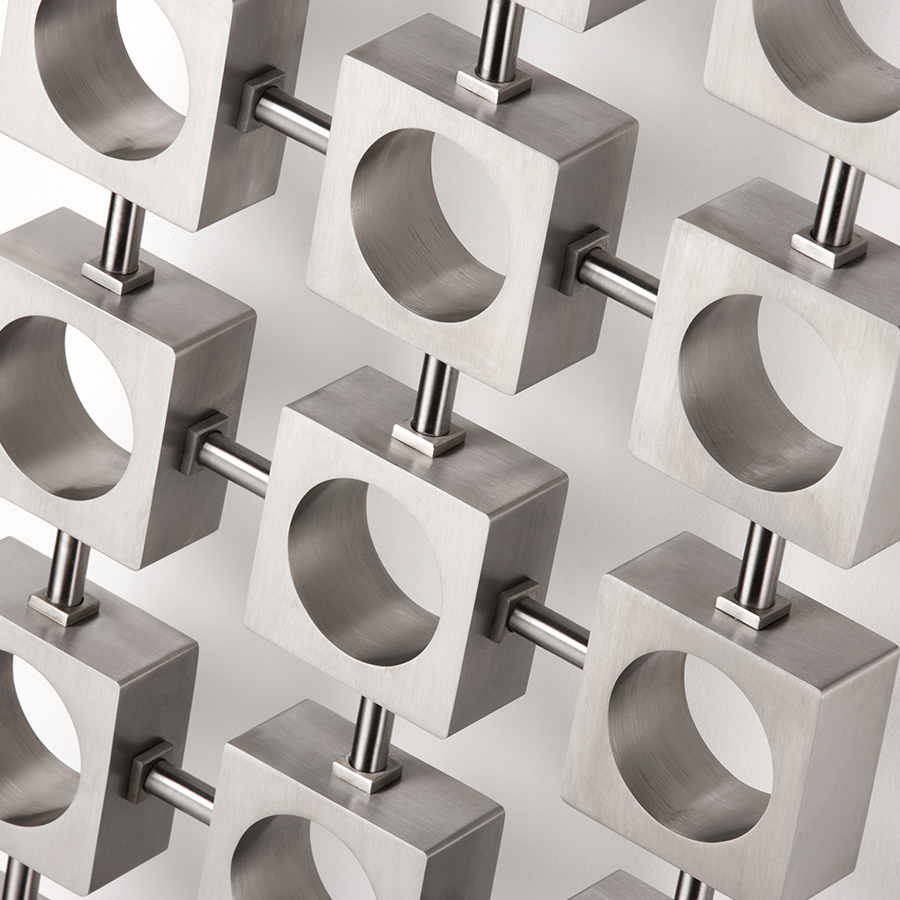
MODEL SHOWN: LOK36-S (Brushed Matt) 
MODEL SHOWN: TUB508-P (Polished) 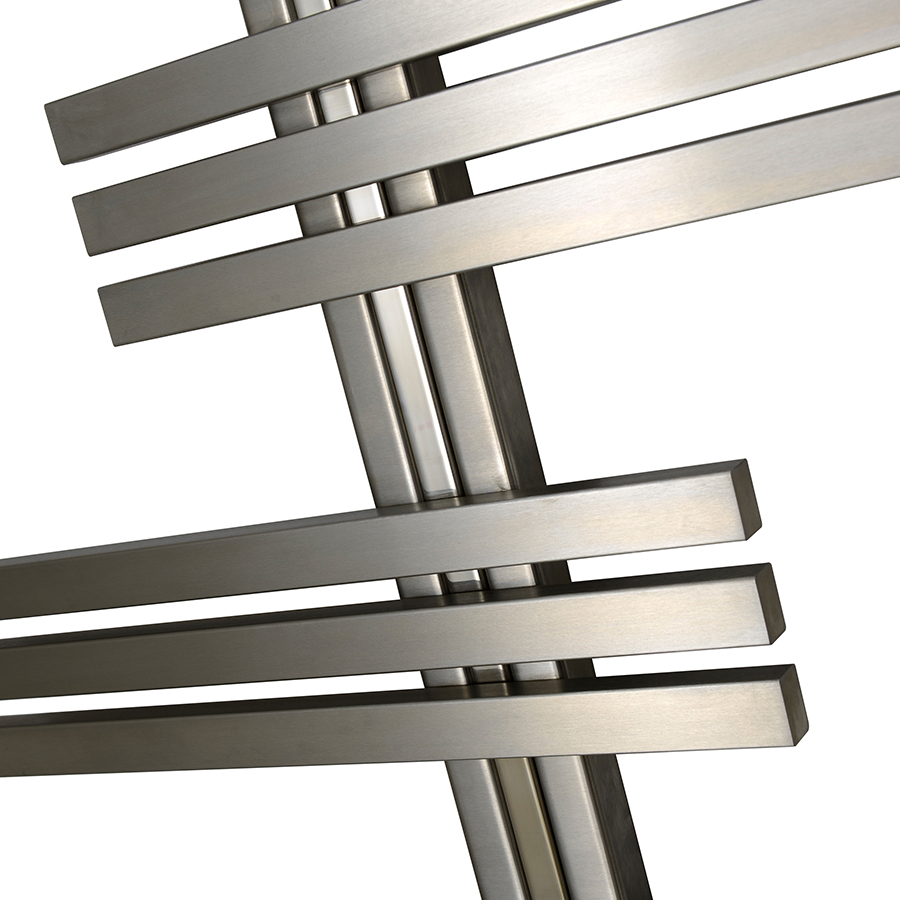
MODEL SHOWN: LNX107-S (Brushed Matt)
Thus, while the initial cost is higher, the investment in an AEON stainless steel radiator or heated rail will easily last the lifetime of the bathroom. And then what? With stainless steel, the whole item can be recycled and re-used – so the consumer can even feel good about disposing of it.
Finally, next time you install a quality stainless steel radiator, take the time to touch the surface. Do you notice how it feels silky and positive to the touch? Why not pass on all this ‘positive energy’ to your next customer.
By Saffet Kalender, Founder and Director of Pitacs Ltd.
